#MyParkIsYosemite

My first time hiking Half Dome.
Yosemite National Park is certainly a special place, both in its physical beauty and grandeur but as well as in the imagination and mind of what we envision as majestic national parks. It is embedded in the mythology of the National Park Service with a rich history that includes the Buffalo soldiers, John Muir and Teddy Roosevelt, and of course its role in being a precursor to the National Park Service by being protected by Abraham Lincoln in 1864 before the establishment of Yellowstone National Park in 1872. Yosemite is also special in that it is a world-class destination so close to so many communities in the Central Valley of California and yet not many in those communities may always easily access it.

CA Mini-Corps Outdoor Education Program Instructors training in Yosemite to provide outdoor education to Migrant students throughout CA.
Growing up in the Central Valley I would often hear about Yosemite, but it would be years before I would really get to discover its beauty. I recall as a college student finally entering the Yosemite Valley on a morning with light fog and emergent sunlight. It was magical. I would return to explore Tuolumne Meadows and Lambert Dome. Later, with a group of friends we scaled Half Dome, and returned several times to repeat that experience. Whether it was walking Mariposa Grove with park rangers as we trained Latino college students to be outdoor instructors for migrant students, or simply hiking the Panoramic trail with friends, Yosemite kept providing a diversity of experiences. It is that diversity that presents an opportunity—to welcome a diversity of the American public, from near and afar, to enjoy a diversity of experiences within the park.

It is important to me, as a Latinx immigrant, a US Citizen, an English-Language Learner, and the first in my family to go to college, to be a role model of how our parks are for all—and the work we need to continue to advance in true inclusivity. I strive to exemplify how my cultura is important to me in these spaces, and how we create more inclusive environments to welcome all regardless of background. Yosemite welcomed me in its grandeur, and as a Yosemite Centennial Ambassador, I want to extend that invitation to others. We much to do but we also have much to celebrate, and regardless we start somewhere. Since that first time I wandered into Yosemite Valley, I have visited many other national parks and public lands and yet in many ways My Park Is Yosemite. It does not have to be yours or it can be, so long as you can see and feel yourself reflected in such a place.

En este año que celebramos el centenario de nuestros parques nacionales, vengan, encuentren su parque, están bienvenidos, es mi placer ser su embajador y guía.
This post is part of the #MyParkIsYosemite campaign. If your park is also Yosemite, join us! If you want to express your love for other parks or other public lands share that too! #Next100 #PublicLandsForAll #EncuentraTuParque

José González is the Founder of Latino Outdoors. He is a Yosemite Centennial Ambassador and represents Latino Outdoors in several coalitions including the Latino Conservation Alliance and the Next 100 Coalition. He also serves on a National Park Service advisory committee and has been recognized with several honors, including the National Wildlife Federation, Grist Magazine, and The Murie Center.
To learn more about the Next 100 Coalition, check out this site and sign the petition.



















